Fiber optic cables commonly used in high-voltage transmission lines include all-dielectric self-supporting optical cable (ADSS), fiber optic composite aerial ground cable (OPGW) and the fiber optic composite aerial phase cable (OPPC). Each type of cable has its specific applications in the lines.
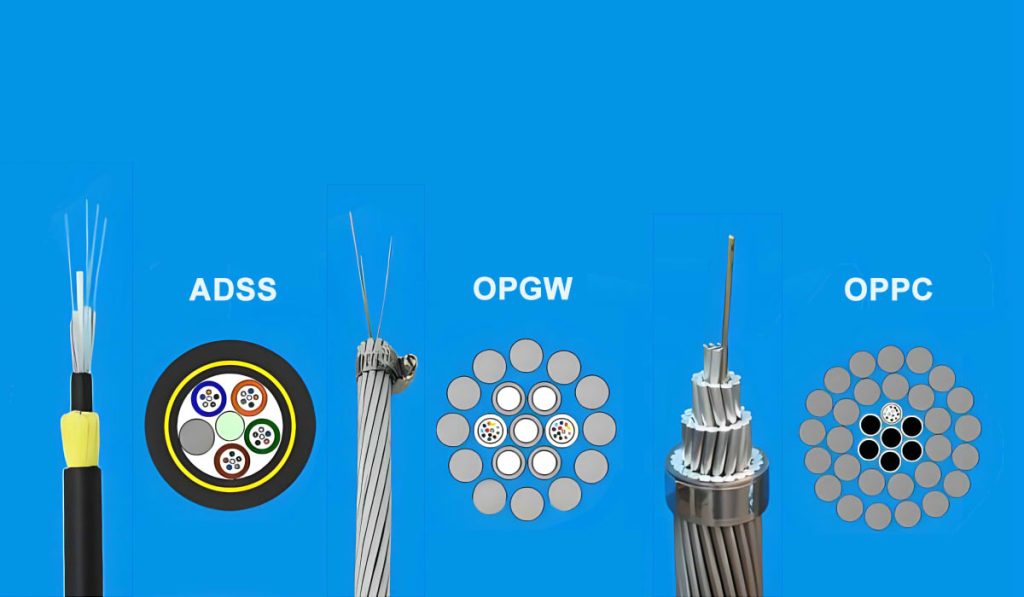
Table of Contents
Cable ADSS
ADSS cable is widely used in transmission lines with voltage levels of 220 kV, 110 kV y 35 kV child HT cables, usually on existing power lines.
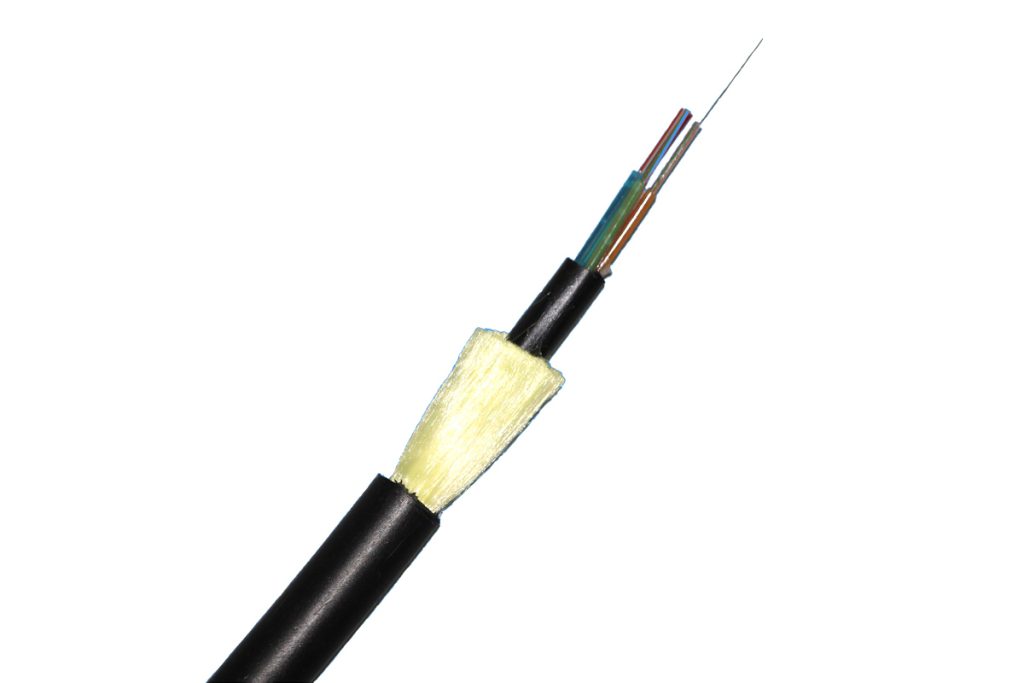
Main advantages of ADSS
- Due to the high elasticity and lightness of the aramid fiber modulus, ADSS cable uses aramid fiber as tensile strength component.
- Small geometric dimensions and one third of the weight of a common optical cable, allowing direct mounting in suitable positions on electrical towers with minimal additional loading.
- Ion neutralization impregnated outer shell provides strong electrical corrosion resistance.
- Good insulation capacity due to the use of non-metallic materials, which prevents lightning strikes and ensures normal operation of the cable even in the event of power line failures.
- The installation of ADSS fibra cable can be done without power outages using existing electrical towers, which reduces costs and facilitates maintenance.
- Wide operating temperature range: -40°C a +70°C.
- Wide span length range: 50 m a 1200 m, with good tensile strength and solid structure, flexible and reliable.
Main disadvantages of ADSS
- Despite its ability to resist electrical corrosion, ADSS is exposed to long-term electromagnetic corrosion due to its parallel arrangement to high-voltage transmission lines, which can damage the outer sheath of the cable and even cause cable breakage accidents.
- Generally suspended below the sleepers of the towers, ADSS may face insufficient distance problems when crossing roads, railways, rivers, bridges and other tall obstacles.
Cable OPGW
OPGW cable is mainly used in power lines with voltages of 110 kV a 750 kV, and even at higher voltage levels. Due to factors such as power outages and security, It is mainly applied in new lines.
The OPGW cable lays optical fibers inside the ground line of high voltage overhead transmission lines to establish a fiber optic communications network on the transmission line. This structure combines ground and communication functions, providing lightning protection for transmission conductors and transmitting information through optical fibers integrated into the ground line.
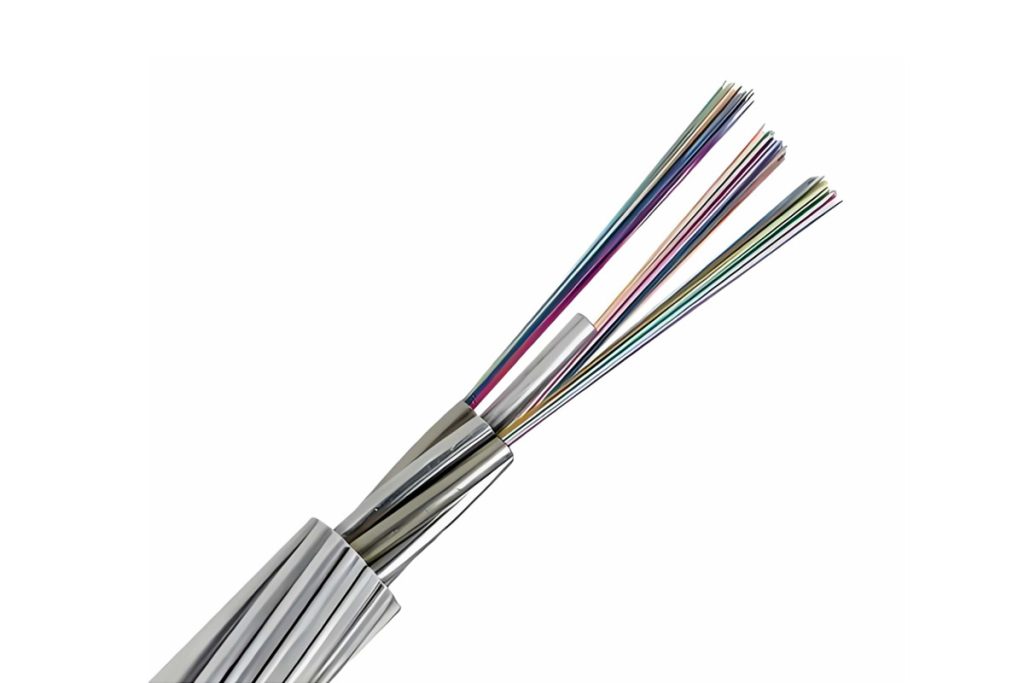
Main advantages of OPGW
- High transmission speed and bandwidth to meet the communication needs of the power system, as well as general communication needs.
- Good mechanical strength and corrosion resistance, enabling long-term stable operation in harsh environmental conditions.
- Good insulation properties and dielectric breakdown resistance to ensure safe operation of optical fibers under high voltage conditions.
- It can be installed along with the line in new towers, providing communication and lightning protection functions without taking up additional space or resources.
Main disadvantages of OPGW
- High cost requiring considerable investment, especially in terms of installation and maintenance that need specialized technicians and equipment.
- Interference from electrical signals affects communication performance, so shielding technology is required to ensure the quality and reliability of communication signals.
Cable OPPC
OPPC cable is a new type of optical cable specialized in power, where fiber optic units are integrated into phase lines, providing dual function of phase line and communication. OPPC cable design is suitable for any low and medium voltage transmission line newly built, mainly for lines with voltages below 110 kV. It is especially useful in distribution lines. 35 kV or less, some of which do not require ground lines and, Thus, cannot use OPGW.
Due to factors such as power outages and security, OPPC is mainly used in new lines. In all electrical networks, phase lines are essential. To meet power monitoring or fiber optic interconnection requirements, OPPC is similar in technology to OPGW. Fiber optic units are appropriately integrated into the traditional phase line structure to form a fiber optic composite phase line..
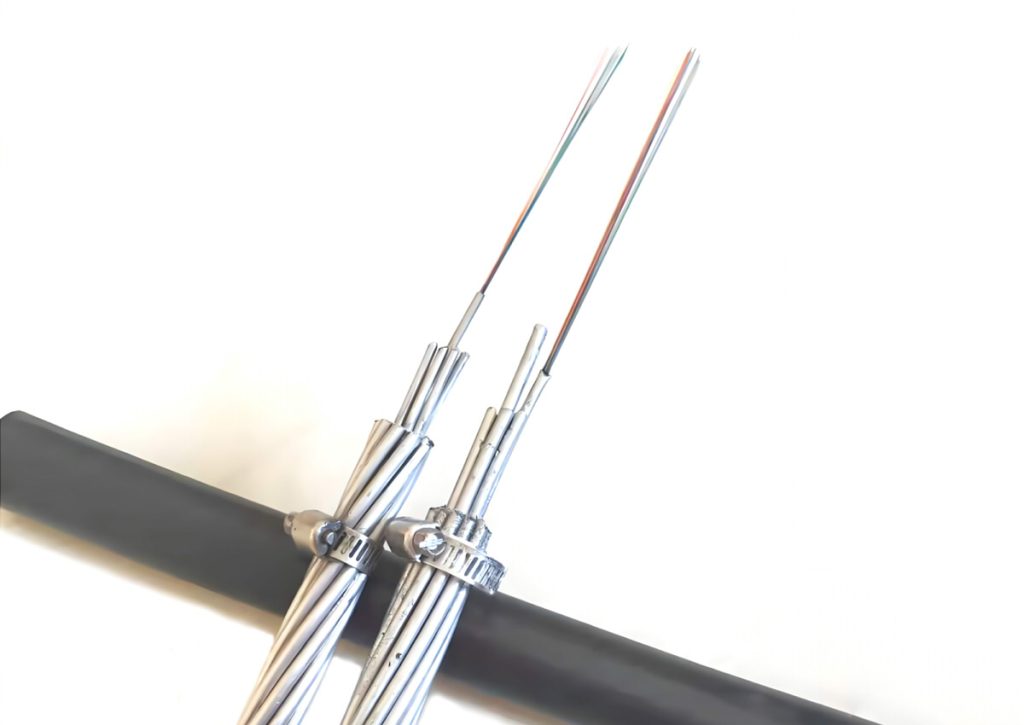
Main advantages of OPPC
- Simultaneously fulfills the functions of energy transmission and communication. OPPC cable is not only a conventional overhead phase line for transmission lines, but also an optical cable for signal transmission. Must meet technical requirements that cover mechanical characteristics, electrical and fiber optic transmission.
- Take full advantage of existing resources in transmission line corridors to implement optical communications. When existing lines are designed with ground lines or with less mechanical consideration for ground lines, It is not feasible to use OPGW cables. Besides, safety and safe spacing limitations for ground transmission lines make the use of ADSS cables difficult. The additional installation of conventional optical cabling on poles presents problems such as excessive channel occupation, robberies, maintenance difficulties and lack of economy. Therefore, when replacing one of the existing phase lines with OPPC, communication function can be added without altering the original functions of the line and overcoming the mentioned deficiencies.
- Does not increase design complexity when using OPPC cables. OPPC cable design adapts to conventional transmission line design conditions, since it is designed to adapt to the mechanical characteristics of conventional drivers. Therefore, does not add or significantly change the physical-mechanical characteristics of the towers, maintaining the same design complexity as conventional transmission lines.
- Greater resistance to electrical corrosion that considerably increases its useful life. Conventional transmission conductors are usually made of aluminum or aluminum coated steel as ACSR, while OPPC products are designed with aluminum coated steel wire, combined steel and aluminum tube units, Structurally similar to steel-clad aluminum conductors. Because aluminum coated steel wire is more resistant to electrical corrosion than galvanized steel wire, OPPC cable lifespan is significantly improved.
- Adequate thermal stability that guarantees the quality of optical communication. The allowable temperature for transmission line conductors is generally 70°C or 80°C. Optical fibers can operate long term at 85°C, and the grease dripping points of the fiber optic and cable are greater than 200°C. Besides, Aluminum coated steel wire and aluminum have good thermal stability at 120°C, ensuring that both power transmission and fiber optic communication are not affected.
- Good lightning protection performance. Due to the use of large cross section conductive materials in OPPC, can withstand short circuit and lightning currents (including hidden ground currents) greater than those of OPGW. Besides, by not necessarily being installed on the top of the towers during construction, is less susceptible to being struck by lightning, which prevents accidents caused by lightning.
- Since OPPC is a phase line composed of optical fiber, both the junction box and the line have high voltages, providing an absolute advantage against theft.
- Being a phase line, OPPC can reduce line material, reduce the amount of work for the construction of the line and save investment in engineering projects.
Main disadvantages of OPPC
- Currently, OPPC cable is installed in tensile strength segments, no intermediate connections. If a break occurs in the middle of a tensile strength segment during operation, all OPPC wiring on that segment needs to be replaced, which is equivalent to replacing not only the cable, but also a complete driver.
- The use of preformed cable fittings during the installation. The unique arrangement of the fiber optic tube bundle within the OPPC cable determines that the fixing hardware must be preformed. Nevertheless, the application of preformed fittings in sections of conductors with cross sections greater than 240 It is not very developed at present, Therefore, its use in large section conductors must be specifically analyzed and used with caution..
- When installing OPPC fiber optic composite phase lines, the use of junction boxes is required to connect both the cable and the guide wires. OPPC cable splicing involves separating the fiber optic units on the operating phase line, what separation technology involves photoelectric in fiber optic splice boxes, resulting in a more complex and demanding process compared to ADSS and OPGW cables. This increases the difficulty in both construction and future maintenance..
- The arrangement of excess cable in fiber optic splices in phase lines is not very convenient and must take into account factors such as electrical space.
In summary, although OPPC cable has its advantages, It also has limitations. Represents a direction in the development of optical cables, but it is currently in a stage of exploration and testing.
Conclusion
In conclusion, when considering the implementation of fiber optic cables in an electrical transmission project, It is crucial to carefully evaluate the advantages and disadvantages of each type of cable, like ADSS, OPPC's OPGW. Each of these cables offers unique features that make them suitable for different situations and project requirements.. For example, ADSS may be preferable on existing transmission lines due to its ease of installation and low impact on existing structures, while OPGW may be more suitable for high voltage applications requiring both power transmission and communication capability. And on the other hand, OPPC offers a comprehensive solution by combining phase line and communication functions, but also presents specific challenges in terms of installation and maintenance.
Therefore, Choosing the most appropriate optical cable will depend on a variety of factors, as the line voltage level, the existing infrastructure, communication requirements and resource availability. It is essential to perform a detailed analysis of the project needs and consult with experts in the field to make the most informed and beneficial decision for the success of the electrical transmission project..

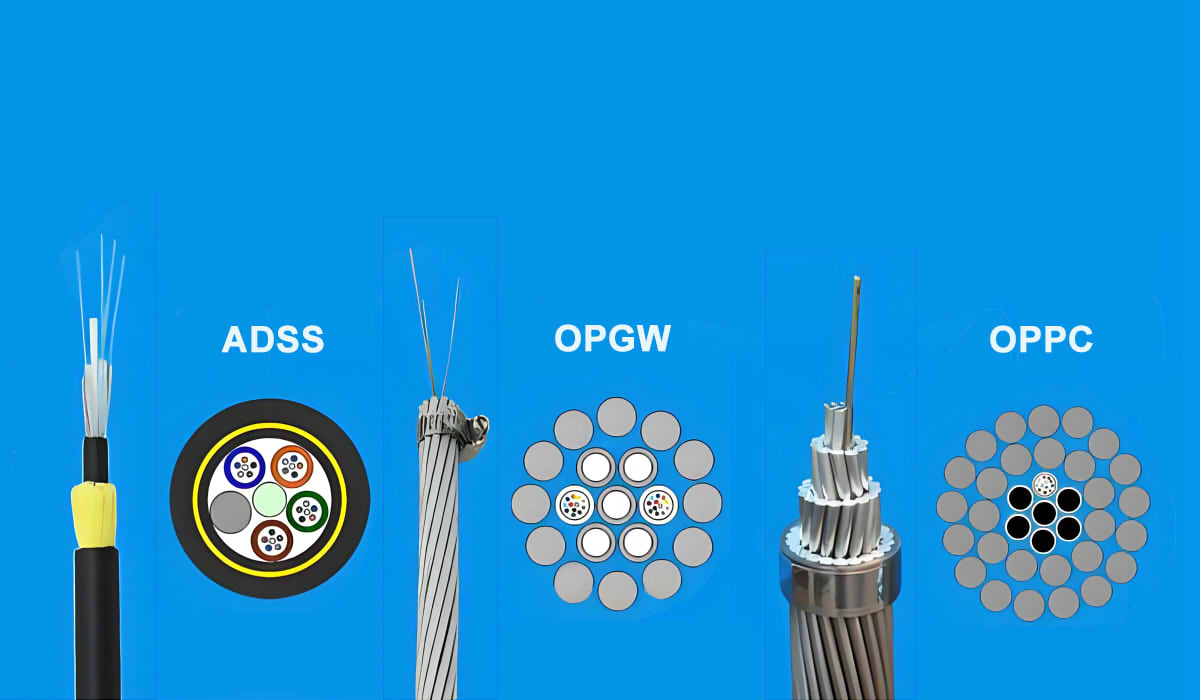
2 thoughts on “ADSS OPGW OPPC: Selection of Fiber Optic in Air Lines”
Comments are closed.